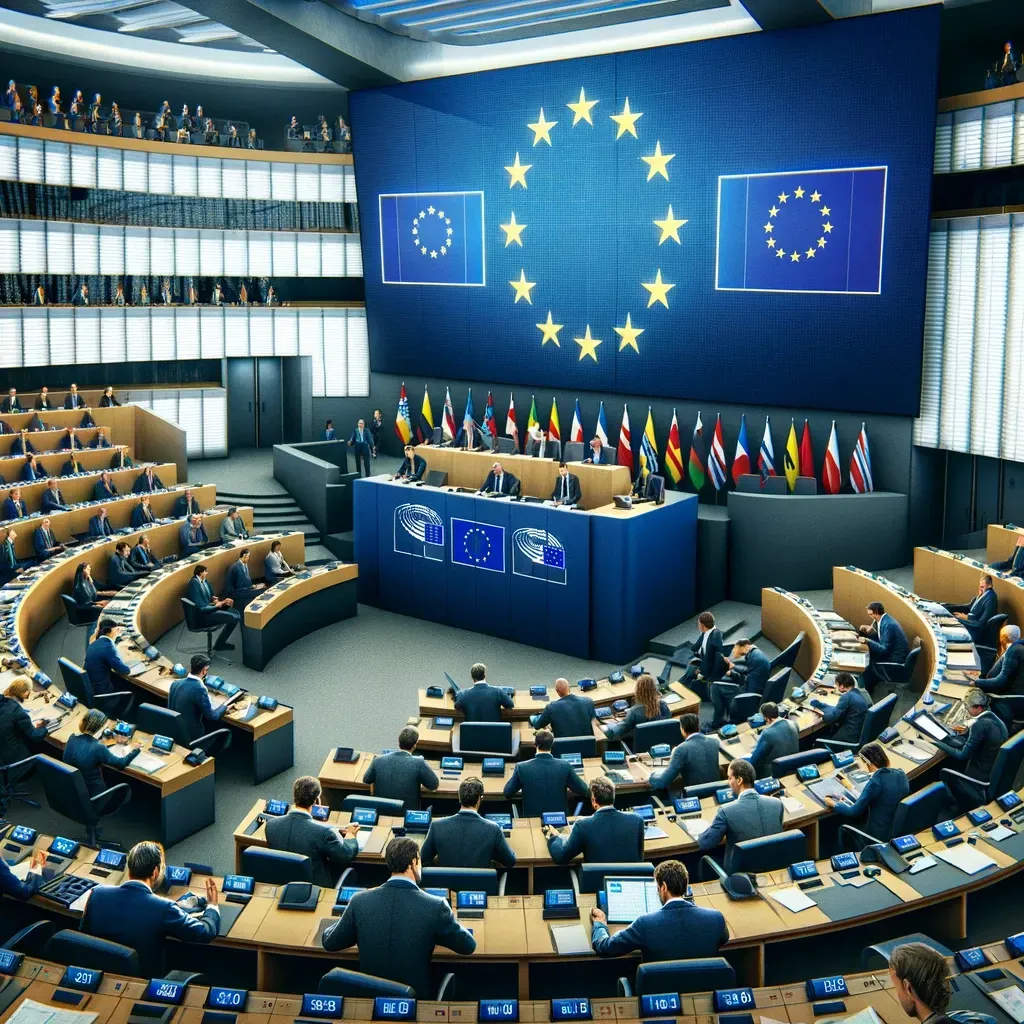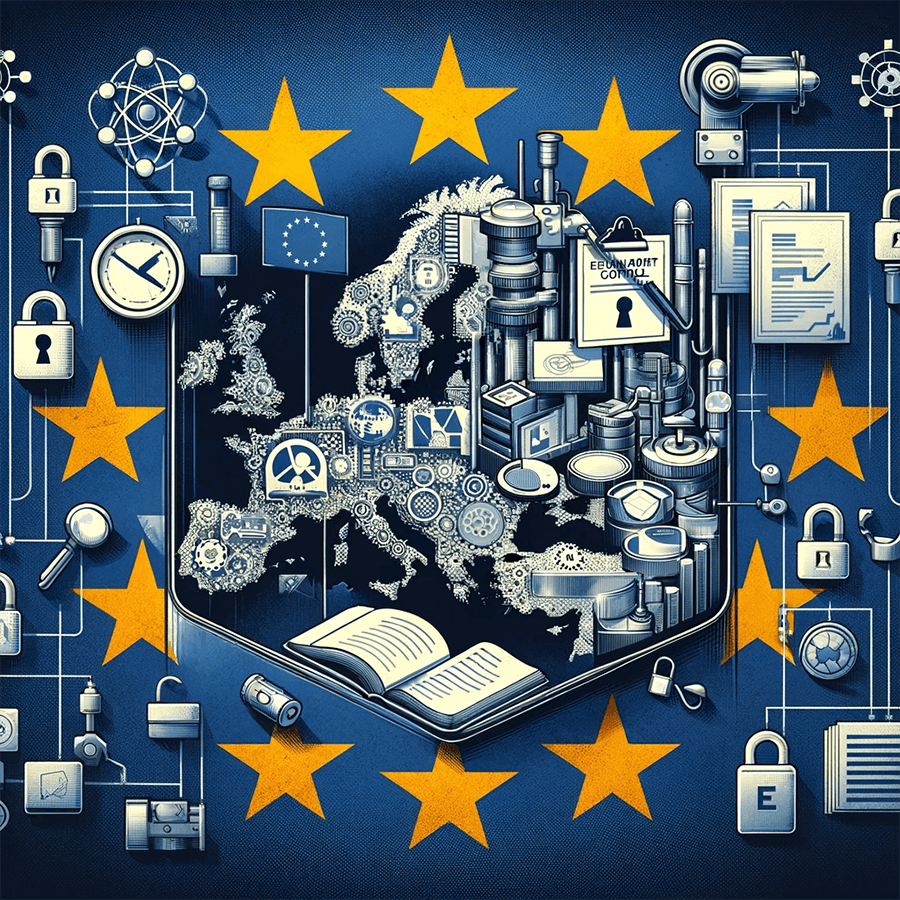News
Read all our recent articles, client Alerts and Policy Briefings here below

The European Union (EU) has been at the forefront of the global push towards digital transformation, adopting a plethora of digital regulations aimed at fostering innovation, ensuring economic growth and competitiveness, and safeguarding fundamental rights. As we move into the next legislative cycle, the EU Council – under the leadership of the Belgian presidency – has outlined its main priorities in digital policy, emphasizing among others the importance of effective implementation, the need for a European approach to digital technologies, and alignment with sustainable objectives. Prioritizing Digital Transformation Digital transformation is a key driver of innovation, economic growth, and sustainability within the EU. But as Belgian Deputy Prime Minister Petra de Sutter stated, it must be balanced to ensure that this transformation benefits all citizens: “[it] must be grounded on a safe, inclusive, sustainable, and human-centric approach – one that upholds democracy and human rights”. Ms de Sutter highlighted the importance of every European citizen having the opportunity to develop essential digital skills and participate actively in the online world. Mathieu Michel, Belgium’s Secretary of State for digitisation, meanwhile called for a “common European approach to innovative digital technologies striking the right balance between innovation, regulatory burden, and protection of the Union’s economic security”. He also emphasised digital skills and digital infrastructure as key components to achieving this digital transition. Key Priorities for the Legislative Cycle The Council has identified several main priorities for the upcoming legislative cycle: Effective Implementation of Digital Regulations: The primary focus is on the “effective, coherent and efficient implementation” of recently adopted digital laws with minimal administrative burden for both public and private sectors. This includes laws such as the AI Act, Digital Services Act (DSA) and the Digital Markets Act (DMA), which aim to create a safer and more open digital space in the EU. Common European Approach: The Council advocates for a unified approach to innovative digital technologies as a crucial element for enhancing the EU’s competitiveness and protecting its economic security. This approach must balance innovation with regulatory measures to ensure a dynamic and open economy. Digital and Green Transition: The Council emphasizes the synergy between digital transformation and the green transition, advocating for ambitious sustainability objectives. This aligns with the EU’s broader goals of achieving climate neutrality and promoting sustainable development, as well as reducing their dependence on foreign fossil fuel imports. Building Digital Skills and Bridging the Digital Divide: The Council explicitly refers to the importance of attracting and retaining a digitally skilled workforce, with a particular focus on increasing women’s participation in the tech sector. Bridging the digital divide is critical to ensuring that all citizens can benefit from digital advancements. This also means increasing the number of cybersecurity professionals in the EU. There is already a severe lack of cybersecurity professionals to meet the current demand, and with the demand set to increase exponentially in the coming years, a tangible strategy will need to be employed. The Council fails to outline how this will be achieved. Ensuring Secure and Resilient Infrastructure: The need for secure and resilient digital infrastructure across the EU is paramount. This includes enhancing cybersecurity measures and ensuring the reliability of digital services, but also reducing dependencies on external chip manufacturers and investing in chip-producing technologies and companies with the EU. International Dimension and Digital Partnerships: Strengthening digital partnerships and digital trade agreements is vital for the EU to play a proactive role globally in digital transformation and governance. The Council calls for a coordinated approach to enhance the EU’s influence in international digital policy. Using its influence to promote a rights-based approach to digital policy globally will help facilitate these partnerships without compromising the EU’s stated values. Challenges and Opportunities Implementing these digital regulations presents both challenges and opportunities. The complexity of harmonizing regulations across Member States, ensuring compliance, and adapting to rapid technological changes are significant hurdles. However, successful implementation can further strengthen the position of the EU as a global leader in digital innovation, providing a robust framework that other regions may follow. By prioritizing effective implementation, the EU hopes to ensure that its digital policies not only foster economic growth but also uphold the values of democracy, human rights, and sustainability, ultimately benefiting all its citizens. The EU’s digital strategy aims to create a digital environment that fosters innovation, protects citizens’ rights, and ensures economic security. As the EU navigates the next legislative cycle, the focus on implementing these digital regulations will be crucial in achieving these goals and driving forward the digital transformation agenda. The Belgian Presidency has made clear its ambitions and focus on implementing the digital transition. However, with Hungary next in line for the Presidency, it is unclear what the focus will be under their stewardship and whether digital transformation will still be a priority.

On 12 April 2024, the Council adopted two key directives enhancing sanctions enforcement and implementation across the EU. The first directive on sanctions violations criminalisation (Directive (EU) 2018/1673) establishes an EU-wide definition of sanctions violation as a crime, setting minimum administrative and criminal penalties, while the second directive on asset recovery and confiscation lays down the minimum standards for tracing, identifying, freezing, confiscating, and managing criminal assets, applicable to various crimes, including EU sanctions violations. In our latest policy update, we provide an overview of the EU legislative process related to these directives, the most important measures they introduce, and outline key next steps regarding their implementation. Background & Context Following Russia’s full-scale invasion of Ukraine in February 2022, the EU imposed an unprecedented array of sectoral and individual sanctions against Russian individuals and entities. However, the implementation and the enforcement of these sanctions have posed great challenges for Member States, and for National Competent Authorities (NCAs). As of date, EU sanctions regulations mandate Member States to enforce penalties deemed “effective, proportionate, and dissuasive” for infractions of restrictive measures and enforcement is mostly left in the hands of NCAs. While most of the Member States (including France, the Netherlands and Cyprus) treat sanctions violations as criminal offenses, two countries (Estonia and Slovakia) still consider them administrative offenses, and fourteen countries (including Germany, Austria and Belgium) allow for categorization depending on severity. Prison sentences and maximum fines for the violation of restrictive measures also vary widely from one Member State to another. This inconsistent framework has triggered the need for the harmonization at EU level brought forward by the new directive. Regarding asset freeze and recovery in the EU, the high number of individuals and entities sanctioned in the past two years has put a strain on NCAs to trace and identify the assets belonging to listed persons. The 2018 adoption of the regulation concerning mutual recognition of freezing and confiscation orders laid the foundation for cross-border asset recovery within the EU, facilitating the freezing and confiscation of criminal assets across Member States. Building upon this framework, the new directive establishes minimum standards and aims to enhance the effectiveness of asset recovery efforts and strengthen enforcement measures across the EU. Below we outline the key measures introduced by the above-described EU directives. Directive On the Definition of Criminal Offences and Penalties for the Violation of Union Restrictive Measures The main elements of the EU Directive on Sanctions Violation Criminalization are the following: Definition of Criminal Offenses: Deliberate breaches of EU restrictive measures are defined as criminal offenses. Such breaches include making funds available to sanctioned individuals and entities, failing to freeze assets of designated parties, enabling designated parties to enter or transit through EU territory, engaging in sanctioned transactions with third states, trading in sanctioned goods or services, conducting sanctioned financial transactions, circumventing EU restrictions, failing by a designated party to disclose funds to NCAs, and violating conditions of authorizations granted by NCAs. Incitement, aiding, and abetting also constitute offenses, while offenses committed with “serious negligence,” particularly those related to military or dual-use items listed by the EU, are criminalized as well. Exemptions: Some breaches involving values under €10,000 are not defined as criminal offenses. These actions include making funds available to sanctioned parties, failing to freeze their assets, circumventing restrictions, transacting with third states, providing sanctioned services, or breaching conditions of an NCA-granted authorization for specific goods, services, or transactions. Criminal Penalties for Natural Persons: The penalties introduced by the directive include imprisonment and fines, with specified minimum terms for serious offenses (e.g., a minimum of five years for severe violations involving substantial amounts or values). Penalties for Legal Persons: Penalties for legal persons include both criminal and non-criminal fines. The fines are substantial, with a minimum level set at either a percentage of the legal person’s total worldwide turnover (up to 5%) or fixed amounts (up to EUR 40 million), depending on the severity of the offense. Aggravating and Mitigating Circumstances: Circumstances that can aggravate (organised crimes, forging documents), or mitigate (cooperation with authorities) the penalties for offenses have also been defined by the directive. Jurisdiction and Enforcement: Member States must establish jurisdiction over these offenses, including cases with cross-border elements. They are also expected to equip their authorities with effective tools for investigating violations, similar to those used against organized crime, and to collect and share statistical data on offenses to monitor and adjust enforcement practices as necessary. Protection for Whistleblowers: Provides for the protection of individuals reporting violations of EU sanctions. EU-Level Cooperation: Enhances the collaborative role of EU bodies in enforcing Union restrictive measures together with Member States’s NCAs. The Commission is expected to coordinate implementation and data exchange, Eurojust and Europol will support cross-border investigations and prosecutions, while the European Public Prosecutor’s Office (EPPO) will prosecute crimes affecting the EU’s financial interests. Directive on Asset Recovery and Confiscation The key provisions of the Directive are the following: Tracing and Identification: The Directive establishes procedures for the tracing, identification, freezing, confiscation, and management of assets connected to a wide range of crimes, include the violation of EU sanctions. Freezing and Confiscation: Authorizes the freezing and confiscation of assets derived from criminal activities. Asset Recovery Offices: Mandates the establishment of asset recovery offices in Member States to facilitate cross-border cooperation and asset management. Asset Management: Requires the management of frozen and confiscated assets to preserve their value until they can be legally disposed of. Cross-Border Cooperation: Enhances the mechanisms for cross-border cooperation among Member States and with third countries to improve the tracing, freezing, and confiscation of assets. Legal Framework: Updates and expands the existing legal framework to cover a wider range of crimes and integrates new procedures for asset recovery. Victims’ Rights: Ensures that victims’ rights to compensation and restitution are considered in asset recovery processes. Use of Confiscated Assets: Encourages Member States to use confiscated assets for social or public interest purposes, enhancing the societal impact of confiscation measures. How the Directives will change the existing EU policy framework? Once implemented by Member States, the directive on the criminalisation of sanctions violation will ensure that offences are met with appropriate and harmonized penalties across the EU, while enhancing the investigative powers of NCAs, and improving supranational collaboration and the prosecution of cross-border offences. The rules on asset recovery and confiscation measures will also contribute to the effective implementation of EU sanctions, as they will apply to sanctions violations offences which will be harmoniously criminalized across EU Member States, and boost NCAs’ capacities to trace and identify the criminal assets of sanctioned parties. Next Steps Both Directives will enter into force on the twentieth day following their publication in the Official Journal of the EU. To incorporate the provisions into their national legislation, Member States will have 12 months for the Directive on criminalisation of sanctions violations, and 30 months for the Directive on asset recovery and confiscation.















